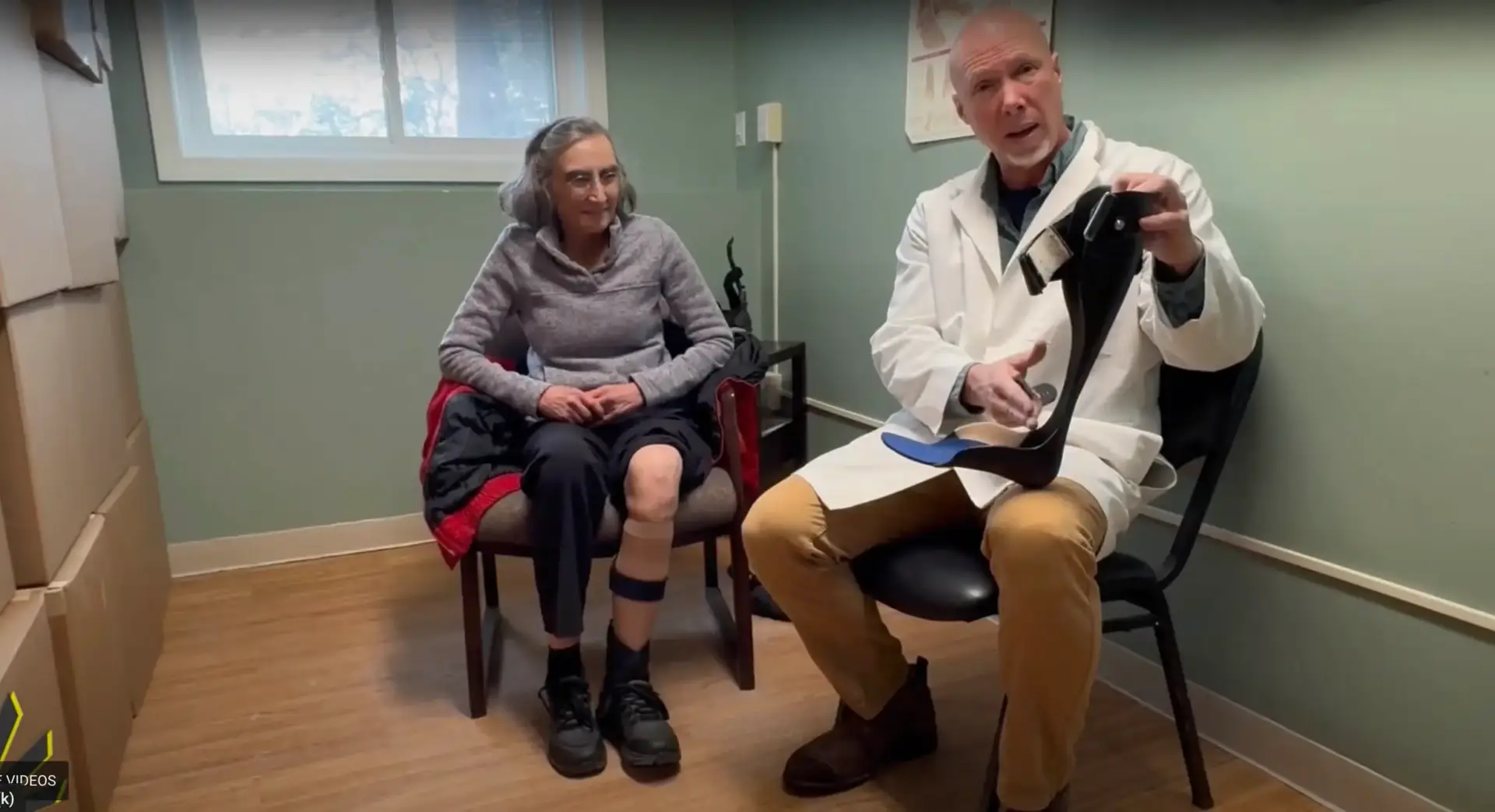Elaine Compares Her Carbon Fiber Brace with Step-Smart Brace for Drop Foot
Hi, it’s Ian, I’m with Elaine. Elaine comes
Multiple sclerosis (MS) is an erratic, often disabling disease of the central nervous system that disturbs the flow of information within the brain, and between the brain and body. With MS related drop foot, the myelin sheath (a substance that protects nerve fibers in the nervous system) and nerve fibers themselves interfere with the transmission of nerve signals between the brain and the spinal cord and other parts of the body. Nerves that send messages to the muscles that flex the ankle just don’t work as they should. Drop foot mobility challenges put MS suffers at significant risk for falls and the consequences of fall-related injuries. Better than 50% of all individuals with MS experience at lease one fall every 6 months.
Foot drop is just one of many neurological symptoms that may occur among people with MS. The nerve pathway damage from MS keeps the muscles from controlling the dorsifexion (upward movement) and sometimes planterflexion (downward movement) of the ankle/foot. The drop foot is often exacerbated by muscle weakness, spasticity (feelings of stiffness and a reduced ability to maintain smooth, controlled movements of the limb), vertigo, and swaying or a uncoordinated type of walking termed ataxia.
Most people think of foot drop/drop foot as the inability to lift one’s toes while walking. In more technical terms it is a loss of dorsifelexion (movement of the foot by the ankle in an upward motion) during swing phase. This is the phase of gait during which the foot is not in contact with the ground. The same muscle group controls the stance phase, an equally important function. This is the phase of gait when the foot is on the ground. The element that is missing with this condition is control of the lowering of the foot at heel strike. In other words, control of the foot by the ankle as it comes down to the ground, following heel strike.
The Step Smart brace for drop foot gives the wearer the appropriate resistance when lowering the foot after initial contact by the heel (heel strike) as well as the lift needed to clear the toes during swing phase. Both the stance phase and the swing phase of gait are important considerations for people with MS related drop foot. Often, brace designers pay too little attention to the importance of stance phase.
The carbon graphite, and PLS brace designs do allow for plantarflexion at heel strike, but it seems that the forces required for this action are just too high; and the stance phase stability at the knee is compromised. These designs are just too stiff. And that might explain why so many afflicted with MS prefer no brace – and the increased risk of tripping over their toes over the use of these two unstable brace designs.
The Step-Smart brace was designed to addresses this dynamic need through the adjustable Jacob Joint. The Step Smart Jacob Joint has 3 levels of resistance. Users are able to adjust the resistance level by selecting the right bumper or resistance combination. Bumper come in three colors – green (low resistance), amber (mid) and black (high resistance). A more controlled resistance does two things: 1) prevents or minimizes foot slap: With too little resistance the foot slaps to the ground prematurely; and 2) prevents or minimizes knee buckling: With too much resistance, the knee becomes unstable and buckles forward.
By lessening the chance of that knee buckling, our Step-Smart design is a particular favorite with our MS users. When a brace design has too much stiffness (resistance) and does not allow for the foot to plantarflex at initial contact, the result is that the user feels a flexion force at the knee. This produces and uncomfortable feeling of instability. The knee stability gained by the Step-Smart brace design is especially noticeable when descending a ramp or slope. A welcome relief from other braces which can feel unstable.
Folks with MS may have additional symptoms which can make foot drop worse, such as numbness, muscle weakness, and spasms. The National MS Society (NMSS) notes that people often try to adapt on their own by using different gaits, which in turn may cause poor balance, pain and fatigue. Trying to live with the symptoms can be tiring, uncomfortable and potentially dangerous.
Rosalind Kalb PhD NMSS says:
“Using a tool can help people be as active and independent as they want to be”
The Step Smart Brace for MS Drop Foot is a great option.
It is certain to lessen fall injuries and increase mobility.
Hi, it’s Ian, I’m with Elaine. Elaine comes

Hi, it’s Ian from Insightful. I’m pleased to introduce you to Gail who came from Connecticut

Hey there, it’s Ian from Insightful. We have Chris here who came from Framingham, MA, and he has flail foot
367 U.S. Route 1, Suite 5-S
Falmouth, ME 04105
(207) 885-0414
faq@insightfulproducts.com

Site by Fisher Green Creative. LLC